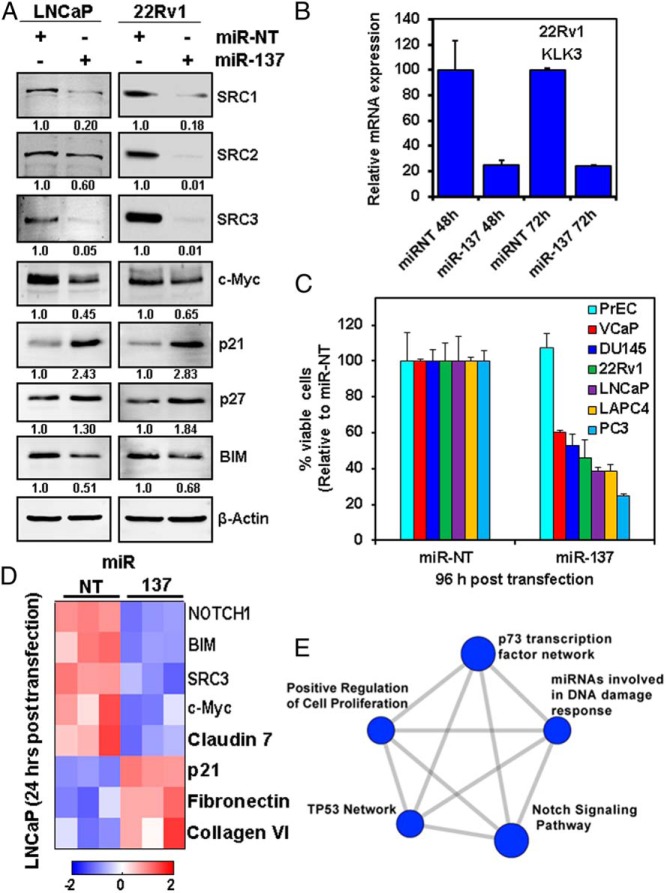Figure 3.
miR-137 depletes p160 SRCs and exerts significant antiproliferative activity against PC cells. A, PC LNCaP and 22Rv1 cells were transfected for 24 hours with miR-NT or miR-137 mimetic, then harvested, and total cell lysates were prepared. Immunoblot analyses were conducted for SRC1, SRC2, SRC3, and β-actin in the lysates. The numbers beneath the bands represent densitometry analysis and are normalized to β-actin expression in the cell lysates. B, 22Rv1 cells were transfected with miR-NT or miR-137 mimetic for 48 or 72 hours. At the end of exposure, total RNA was harvested from the cells, and q-RT-PCR was performed for KLK3 mRNA. Values were normalized to the expression of β-actin and expressed as a % of the value of the miR-NT-transfected cells of the corresponding time point. The expression of the AR-target gene KLK3 (PSA) was significantly depleted by miR-137, suggesting inhibition of AR axis activity. C, PrEC, VCaP, DU145, 22Rv1, LNCaP, LAPC4, and PC3 cells were transfected with miR-NT or miR-137 mimetic for 96 hours, followed by MTT assay. Values are reported as viable cells (% of control, miR-NT-transfected cells) ± SD. D, LNCaP cells were transfected with miR-NT and miR-137 mimetic for 24 hours in triplicate wells. At the end of treatment, cells were harvested, lysed, and RPPA assay was performed on the lysates. Shown are the proteins that exhibited a greater than or equal to 1.25-fold change in cells transfected with miR-137 mimetic compared with those transfected with miR-NT. SRC3 and c-Myc were the most down-regulated targets in the RPPA dataset. E, Pathway analysis of the RPPA results indicates that many of the targets altered by miR-137 reexpression are involved in Notch signaling, response to DNA damage, p53 pathway, and regulation of cell proliferation.

